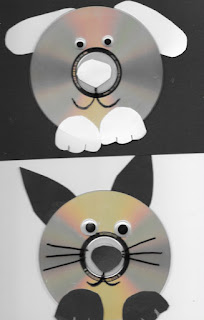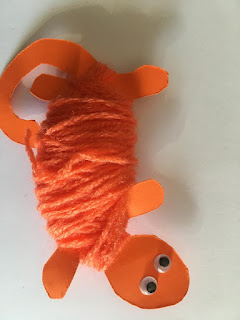For centuries, dolls’ houses have encouraged children’s imaginations and story telling. Toy farmyards, zoos, soldiers and train sets, even Playmobil and Lego, can also be used to create miniature imaginative worlds. Children’s television was once full of 3D models: Thomas the Tank, Fireman Sam, Clangers, etc. So I am surprised there aren’t more children’s fiction picture books that use dioramas and 3D illustration, and I thought I’d investigate.
 |
| From a dolls’ house exhibition (my own dolls’ house was nothing like this!). |
Traditional illustrations create imaginary worlds, but there is something about a miniature 3D scene that draws me in and makes me smile. I am sure I’m not alone (am I?) and I wonder if some children could relate better to a photographic 3D image as it’s so similar to what they see on screens. Or is there a hidden reluctance amongst adults and publishers towards books that look more like television, unless they are already a television series? Alternatively, perhaps most 3D artists/illustrators already work with moving images for the screen, rather than books?
 |
| The television world of the Clangers |
Another explanation for the scarcity of 3D models and dioramas in picture books might be that they are very time consuming to create and require photography and model making or papercraft skills, in addition to illustration. For example,
Antje Damm, who has created several lovely diorama picture books, commented online:
“I am not a very good photographer, and this was my main problem while creating this book.” Whilst
Lauren Child used a professional photographer, Polly Borland, for her two delightful 3D diorama books, and the first,
The Princess and the Pea, took almost two years to complete, compared to the usual three-six months for her picture books. When it came to her second 3D book,
Goldilocks and the Three Bears, this time a set designer was also used, Emily Jenkins. Lauren Child comments on her website:
“As much as I enjoyed designing and building sets and styling scenes, I must say I was relieved that this time it wasn’t my job.”
Whatever the reason for the scarcity of fiction picture books that use 3D dioramas, I thought I'd share some delightful examples. I'll begin with an appealing American one I’ve only just discovered, that is aimed at younger children:
Hank Finds An Egg by
Rebecca Dudley (with a name like Hank, I doubt I needed to mention it’s American!).
 |
| Hank Finds an Egg by Rebecca Dudley (Peter Pauper Press Inc, USA, 2013) |
This was Rebecca's first picture book and as an architect she was familiar with working in 3D. It's wordless and the theme of kindness and perseverance shines through the simple-to-follow visual story about a monkey who tries to return an egg to a nest. Rebecca also trained in graphic design, and the uncluttered layout and quiet natural colour palette add to the book. There are many more images on
Rebecca's blog.
 |
| From Hank Finds An Egg Everything is handmade, including all those leaves, and then photographed. |
The same US publisher, Peter Pauper Press Inc, is behind a further 3D book, this time creating 3D paper-cut dioramas. Published in March 2019, I haven't yet seen
Little Things by Nick Dyer, illustrated by
Kelly Pousette. Years ago, the illustrator was given a book on paper cut and says she became fascinated by the process. She is particularly interested in the shadows and lighting that are possible from photographing the scenes.
The next American 3D book is another I haven't seen,
Viva Frida by Mexican-born illustrator
Yuyi Morales. There are few words, though perhaps this should be classified loosely as non-fiction as it is about the creativity of artist, Frida Kahlo. This vibrant award-winning book appears to be Yuyi Morales' only book that uses 3D models, as her other books are traditionally illustrated. In this
video she talks about how time consuming it was to create a book from models and scenes. Interestingly, like Lauren Child, Yuyi Morales used a photographer for her 3D scenes (Peter O'Shea).
 |
| Viva Frida by Yuyi Morales (Roaring Book Press, USA, 2014) |
 |
| Inside Viva Frida by Yuyi Morales |
Moving across the ocean to the UK, as mentioned earlier, Children's Laureate,
Lauren Child, is behind two gorgeous 3D picture books. In the first,
The Princess and the Pea, Lauren Child both wrote and created the scenes, ready to be photographed professionally by Polly Borland. The figures are painted 2D cut-outs and the backdrops are 3D dolls' house furniture or specially commissioned items. Many of the panelled rooms started life as cornflake packets. Not everything is to scale, as happens in a real doll's house, and Lauren Child feels this creates a stranger, more childlike world. In the book, she writes: "I love the paintings of Vermeer, his detail and the way he allows you a glimpse into someone else's world." This, and her passion for dolls' houses and use of collage in her books, must all inspire the dioramas in Lauren's quirky retelling of
The Princess and the Pea.
 |
The Princess and the Pea by Lauren Child,
photographs by Polly Borland (Puffin 2006) |
 |
| Creating a scene, from The Princess and the Pea |
 |
| Lauren Child's personal doll's house, that took thirty years to create. More here. |
 |
| From inside The Princess and the Pea |
When Lauren Child and Polly Borland partnered again on their second 3D book,
Goldilocks and the Three Bears, they decided to use dolls and teddy bears because Polly Borland's favourite book as a child was the American photographic picture book,
The Lonely Doll by
Dare Wright.
Since it's publication in 1957, it has caused controversy because of the bear's worrying penchant for smacking, but it remains an iconic book and he published many others using the same realistic photographic 3D techniques.
 |
| From The Lonely Doll by Dare Wright (Houghton Mifflin 1998 reprint of 1957 original) |
Again, Lauren Child twisted the story of
Goldilocks and the Three Bears, but this time she didn't personally produce the time-consuming hand-built sets, and instead passed this to Emily Jenkins. Polly Borland remained the photographer. The three bears and Goldilocks were created by doll-maker, John Wright, and Goldilocks stands 30cm tall. Personally, I adore studying the fantastical, intricate photographic 3D illustrations.
 |
From inside Goldilocks and the Three Bears by Lauren Child and many others (Puffin, 2008)
|
 |
This photograph from the making of the book gives a sense of scale.
In reality the trees are young. |
Another illustrator I really enjoy who produces dioramas is the German illustrator,
Antje Damm. I've even bought one of her books that hasn't been translated into English, which is slightly daft as I don't read German - here it is (can anyone translate the title for me?!). Looking through a book when you can't read the language reminded me what it must be like to be a child faced with a mass of alien words, trying to create a story from just the images.
Like Rebecca Dudley, Antje Damm also studied architecture and therefore was proficient at visualising in 3D and making models. I first bought Antje Damm's
Waiting for Goliath because of the interesting illustrations that were a mixture of stand-up 2D and 3D paper/card models, and the strong colour scheme. It looked different to the other books on the shop shelves.
 |
| Waiting for Goliath by Antje Damm (Gecko Press, 2017) |
 |
| From inside Waiting for Goliath |
 |
With a few changes, the model above was used to create the image in the book.
It's interesting what can be done with lighting and photography.
For more info see this blog. |
The Visitor (Gecko Press, 2018) is probably Antje Damm's most well-known book in the UK. Here, all the story takes place in one ground-floor room and it is about loneliness and overcoming fears. Again, the book is in her distinctive 3D style and Antje uses variations in colour and lighting to show the development of the story. For the last scene she took the model outside because Antje wanted the warm light of the sun and enjoys experimenting.
 |
| Antje Damm experimenting with lighting the diorama. |
 |
| From inside The Visitor by Antje Damm (Gecko Press, 2018) |
 |
| A torch provides different lighting effects |
Variations in lighting played a major role for another illustrator,
Elly MacKay, when she created the diorama images for
Maya. Canadian illustrator, Elly Mackay, worked with Indian-born author, Mahak Jain, to create a book that combines reality with the fantastical and a dreamworld. This wasn't Elly's first paper-cut, 3D book, but she said it proved the most challenging. Online, we are told she creates the illustrations by inking synthetic YUPO paper and cutting it into layers that are set up like a Victorian paper theatre, and then she plays with lights and filters to create atmosphere and photographs the scenes. There's a video
here on the making of the book, including collaboration between the author and illustrator, which isn't often allowed to happen in publishing.
 |
| Maya by Mahak Jain and illustrated by Elly MacKay (Owlkids Books, 2016) |
 |
| Elly MacKay creating Maya |
The images above from the pages of
Maya show how Elly MacKay utilised lighting and different techniques. She says the dreamworld uses only black and white, with shadows and fluid, dreamy lines and otherworldly lighting. The real world is crisper, rigid and clearly three-dimensional.
There's more on the creation of Elly's award-winning 3D paper cut diorama books at her
website. The image below is from her 2018 book
Red Sky at Night, and shows the photography of a scene within one of her 'theatres'.
As I've been putting this blog post together, apart from appreciating how staggeringly time consuming the books are to create, I've come to realise how integral photography and lighting are to the images. Some illustrators use professional photographers, and others learn as they develop their skills. All the illustrators here say they use minimal post-production digital computer manipulation, if at all, and Rebecca Dudley says it might only be to remove a pin holding up a model.
Lauren Child deliberately mixes the sizes of objects, as you'd find in a doll's house, and not reality. I enjoy this as, for example in the delightfully quirky
The Princess and the Pea, the juxtaposition of 2D paper figures and 3D miniature objects makes it clear this is an imaginary world. From a positive point of view, Antje Damm's dioramas are also clearly not real, which I like. For me, sterile perfection and seamless minaturisation would detract from the make believe of the storybook world because it leaves less psychological space for the reader's own imagination. Thus perversely, intricate perfection would be more unreal (maybe others disagree?).
Part of the charm of dioramas, whether paper-cut or models, is to feel you are stepping inside a world/theatre of the imagination, not reality. It's like discovering a fairy door on a tree in a wood. You know it's not real but your imagination takes you on a journey of joyous make believe. Now I want to create a 3D story about one of those doors, and where it leads!
Paeony Lewis
Please click for more of my blog posts at the Picture Book Den




























































































